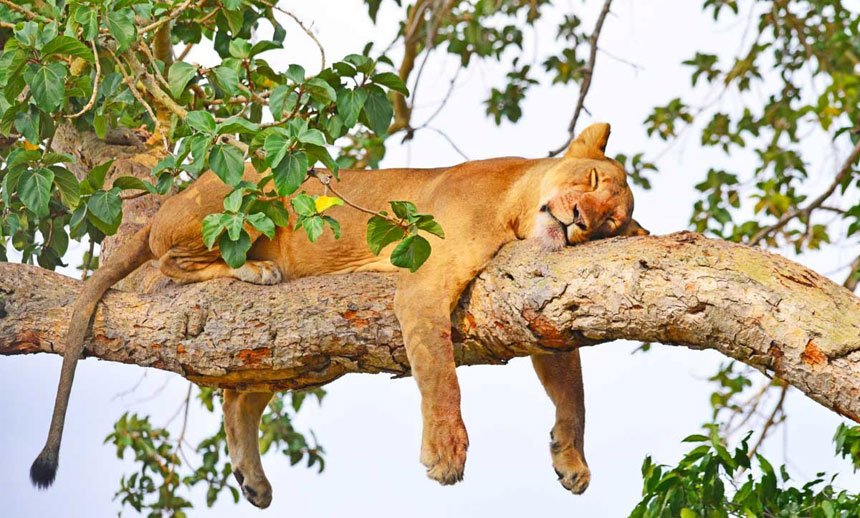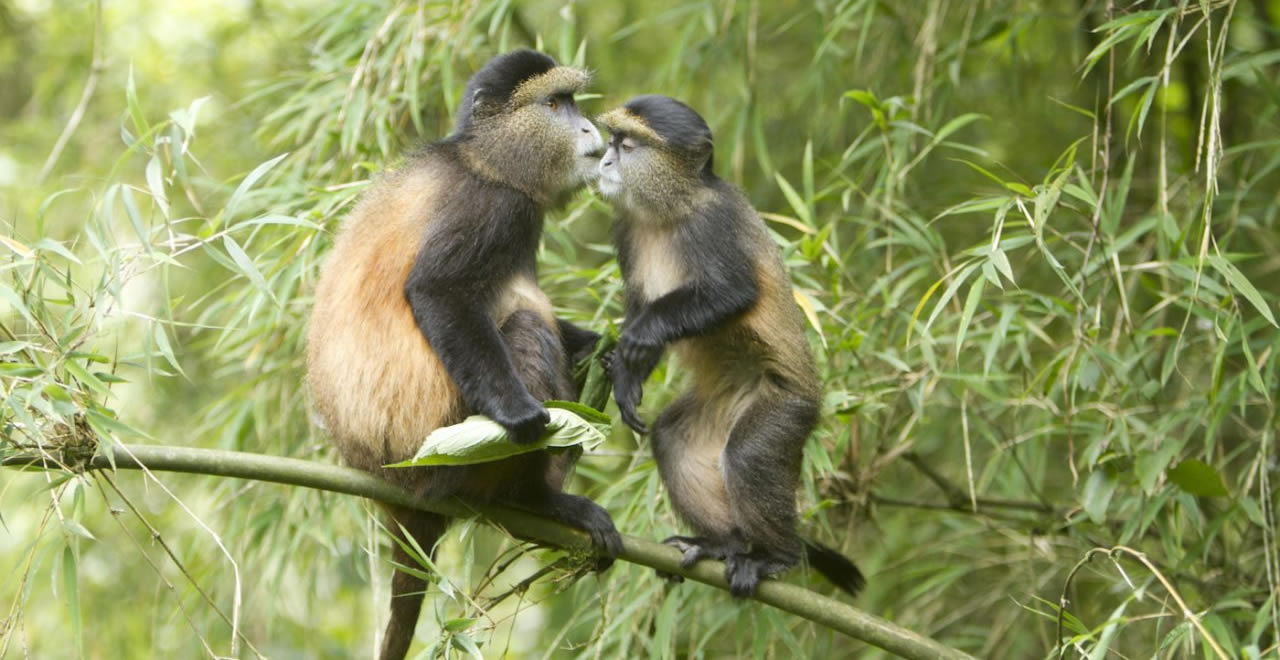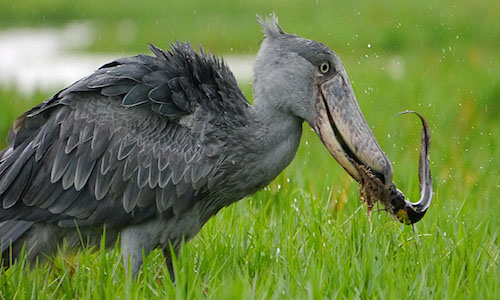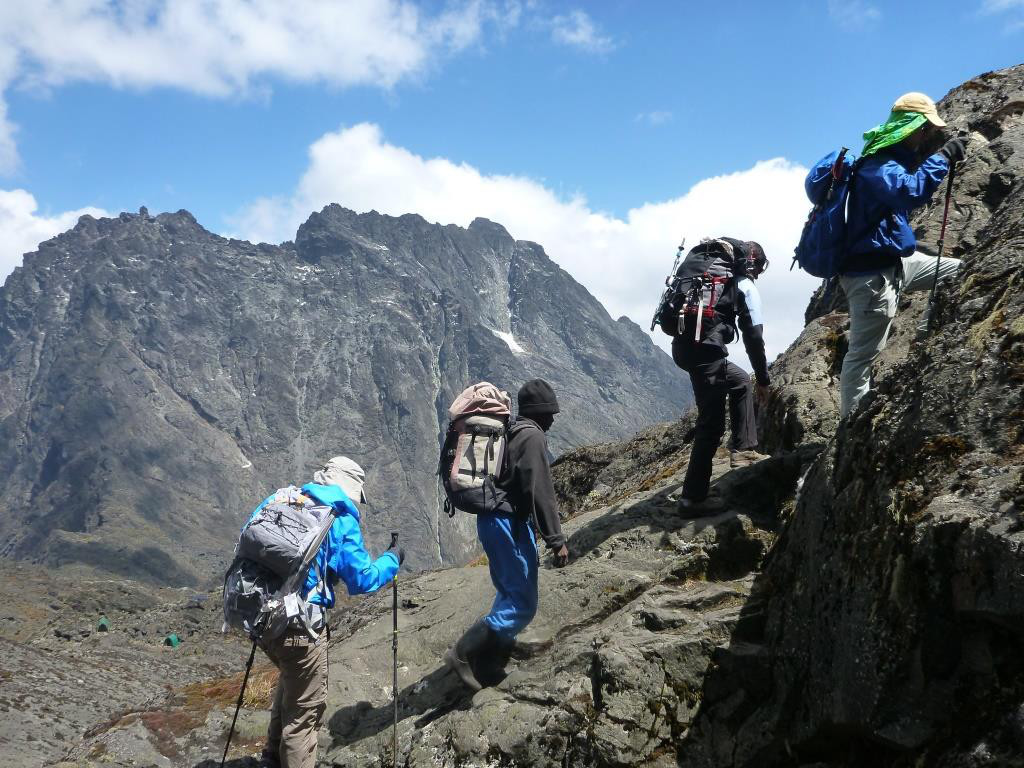Our customised Kenya safaris offer travelers a variety of experiences to explore in this naturally endowed country. Kenya is one the leading safari destinations in Africa with a plethora of attractions ranging from wildlife and adventure to cultural and historic experiences. For wildlife enthusiasts, Kenya has 24 national parks, 15 national reserves, 6 marine parks as well as private conservancies that can be visited for jungle encounters.
Some of the most popular national parks that are frequently visited in Kenya include the Masai Mara, Amboseli national park, Nairobi national park, Lake Nakuru national park, among others. The country is home to the famous Africa “big five” which include lion, leopard, buffalo, elephant and rhinoceros. The annual wildebeest migration that can be seen in the Masai Mara is one of the major highlights of a Kenya safari. The country is well endowed in nature with large savanna plains, the Great Rift Valley, lakes mountains, rivers, beaches all featuring on its travel menu.
Popular Kenya safaris
5 Days Wildebeest Migration Safari
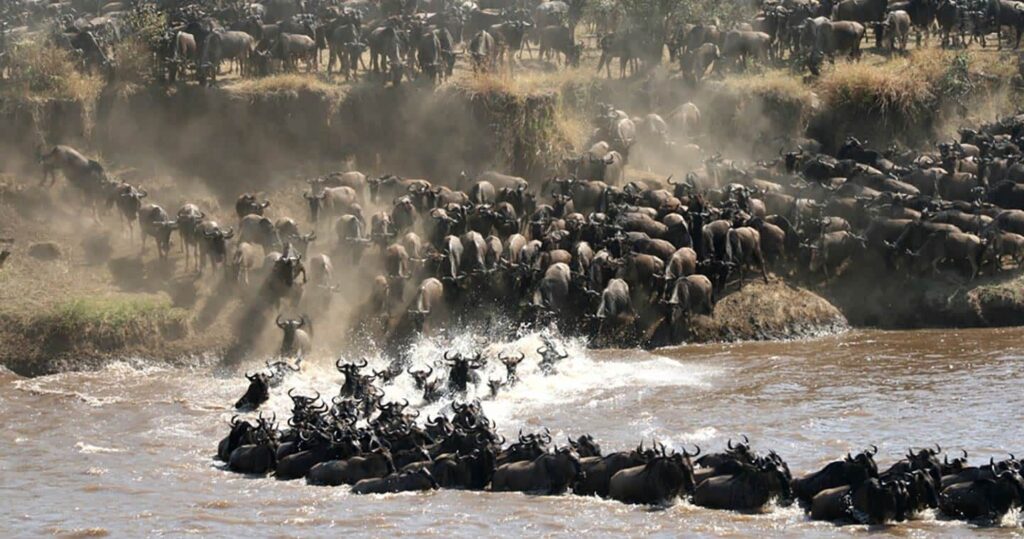
This 5 days wildebeest migration safari takes you to the Masai Mara to watch the breathtaking migration of millions of wildebeests and zebras. Read more..
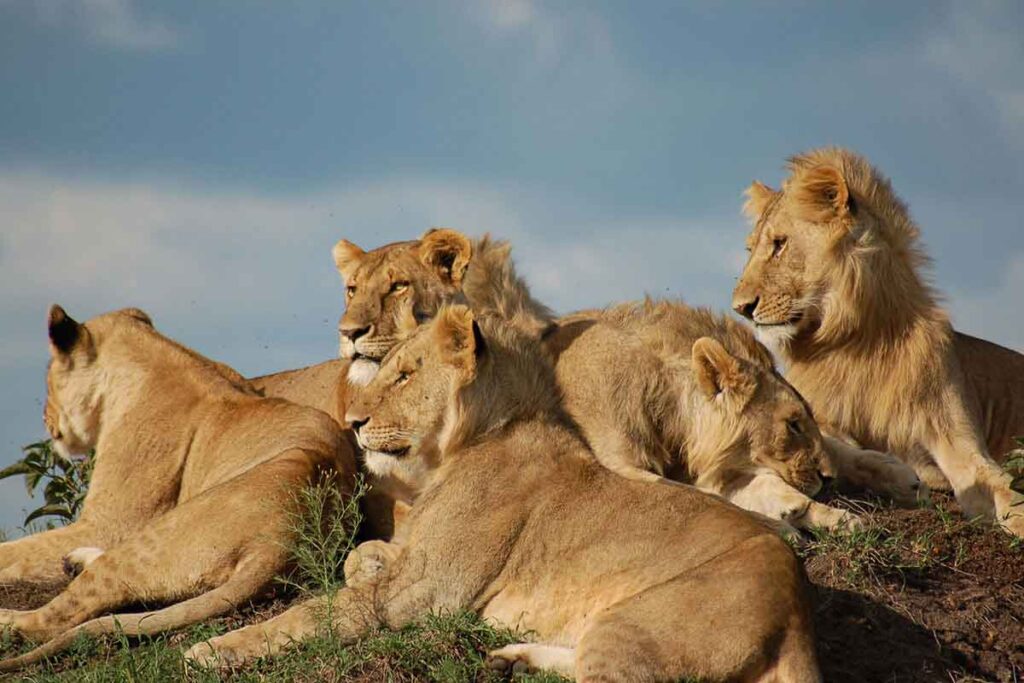
This 6 days Kenya safari explores some of the best wildlife experiences in the country. It includes visiting Masai Mara & Aberdare national parks. Read more..
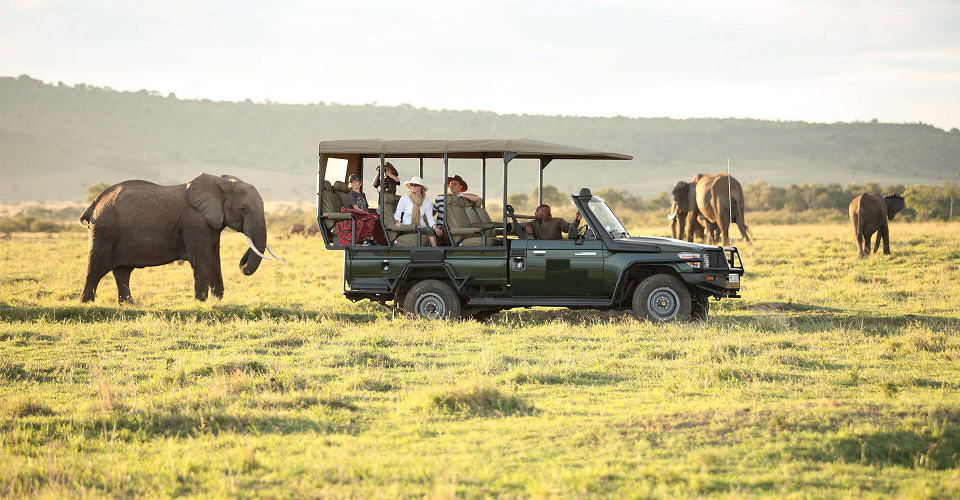
This tour offers some of the best wildlife experiences in Kenya. It includes visiting the Masai Mara, Laka Naivasha & Lake Nakuru national parks. Read more..
7 Days Kenya Wildlife & Beach Safari
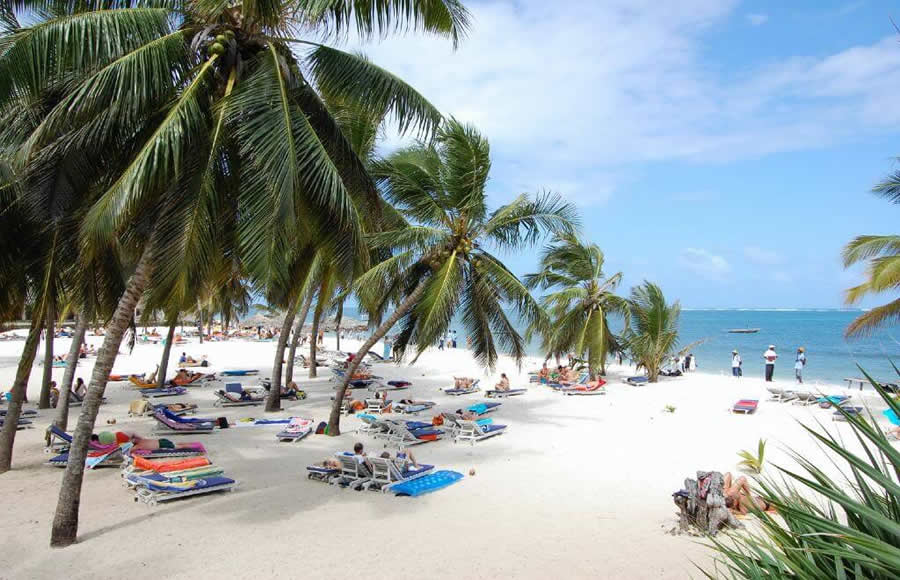
This safari explores both wildlife and beach experiences in Kenya. Visit the Masai Mara and Diani beach on this tour. Read more..
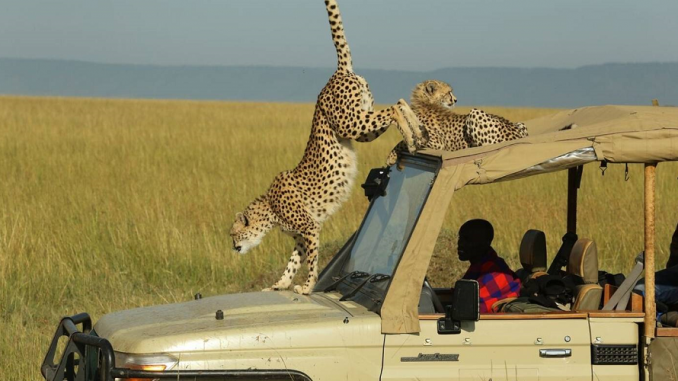
This safari includes visiting 3 national parks for game viewing as well as the Masai community for an amazing cultural experience. Read more..
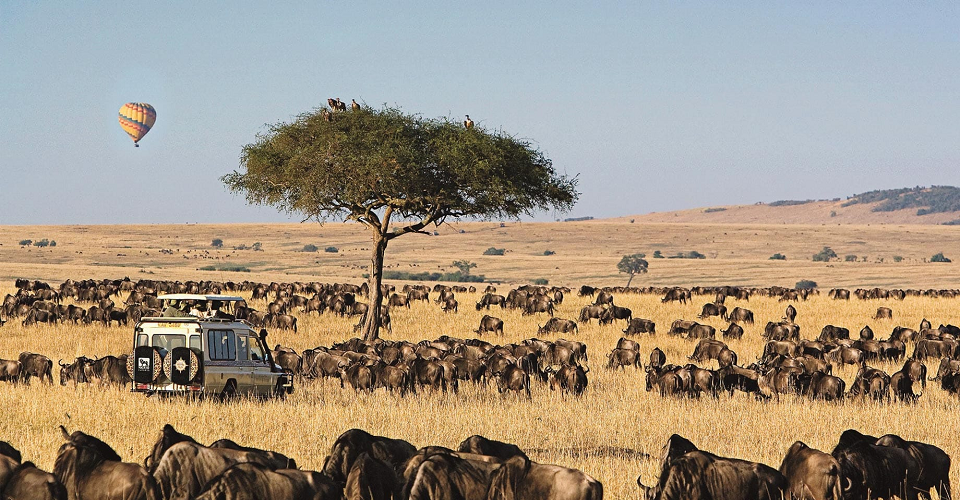
This safari involves visiting Masai Mara national park for game viewing experience and a community tour. Read more..
More about Kenya safaris
Kenya is known as the “Land of the Original Safari” and the tourism and hospitality sector is efficiently run with quality accommodations, transport, and tour guiding system. The country contains over 40 protected areas under the management of Kenya Wildlife Services (KWS). These include Masai Mara and Samburu national reserves, Lake Nakuru, Lake Naivasha, Tsavo East and Tsavo West, Amboseli, Hell’s Gate, Mount Kenya, and the Aberdare Ranges national parks.
Wildlife safaris in Kenya offer an opportunity to see the Big 5 African mammals which include lions, elephants, buffaloes, rhinos, and leopards. The open grasslands of Masai Mara national reserve are famous for harboring the wildebeest migration featuring over 1.5 million animals that traverse across the Greater Serengeti Ecosystem of Kenya and Tanzania.
Most of the mammals live outside the protected areas and Kenya has several private conservancies that promote community conservation. Conservancies are found in the Masai Mara, Laikipia plains, northern rangelands trust, and the Taita Taveta county. These are unique in a way that they have the tourism carrying capacity of guests they host at a given time. They also offer unique activities that may not be available in the main parks including night game drives, horseback rides, guided bush walks.
Conservancies like Ol Pejeta conservancy have a livestock and wildlife management program that benefit farmers whilst preserving biodiversity. This conservancy hosts Sweetwaters chimpanzee sanctuary and the last two female northern white rhinos. In addition to wildlife safaris, Kenya has a long coastline along the Indian Ocean. There are several marine protected reserves in coastal towns of Malindi, Lamu, Mombasa, and Watamu.
The destinations have tropical beaches with soft sands and warm blue waters. Lamu old town is a UNESCO world heritage site known for East African Swahili culture and heritage. Dian beach located on a tiny island is 30 km (1-hour boat ride) south of Mombasa city and is popular with local tourists. Marine reserves offer a wide range of water sports such as skiing, surfing, snorkeling and diving.
Brief facts about Kenya
Located astride the equator with an area of 580,367 sq.km, Kenya is the second largest in East Africa. She shares borders with the Indian Ocean to the east, Uganda to the west, Sudan and Ethiopia to the north, Somalia to the north east, and Tanzania to the south.
The country was colonized by the British Empire but Portuguese and Arabs were the first to occupy the coastal areas. Finally, Kenya gained full independence in 1960. According to the population and housing census 2019, there are over 47 million people of which the literacy rate is 82%.
Culture
Most people get a higher level of education and speak English and Swahili are the official languages. Kenyan shillings is the official currency. There are over 150 ethnic groups, 42 of which are officially recognized by the government. Communities most known for culture and heritage include the Maasai, Samburu, Turkana, and El Molo. The best way to experience the culture and people of Kenya is to visit local communities, markets, and attend local festivals.
Some of the best festivals include Nairobi festival, Lake Turkana cultural fest, Mombasa Carnival, Maralal Camel Carnival in Samburu, Hell’s Gate National Park Bike Festival, and Rhino Charge Motocross Championship.
The country is divided into 47 counties, which serve as the fundamental units of local government. Nairobi capital city is situated in the central highlands below the equator. The city has a population of 4.397 million people and is one of the largest economic hubs of Africa. The primary entry point is Jomo Kenyatta International Airport. Other significant airports and cities include Kisumu Airport in Kisumu City, the third-largest city, and Moi Airport in Mombasa, the second-largest city. A city tour of Nairobi is a fantastic way to learn about the heritage of Kenya at the Nairobi National Museum and Nairobi national park.
Geography and climate
Kenya is made up of a variety of landscapes including beaches along the coast of the Indian ocean to the east, Chalbi desert, highlands, and the rift valley.
The central part is dominated by highlands that support agriculture including Mount Kenya, the highest peak standing at 5,199 meters above sea level. Other prominent mountains in Kenya include Laikipia plateau, Mount Elgon, Mt. Meru, Mau escarpment, and Aberdare ranges.
The northern region is predominantly semi-arid with Lake Turkan (Jade sea) as the major permanent source of water. The area is characterized by active volcanic mountain ranges, forests, ancient ruins, crater lakes, and springs. The land is inhabited by nomadic people including Turkana, Boran, Samburu, El Molo and sometimes called the cradle of mankind.
The remains of the culture of the people are well documented at Koobi Fora and Gede museums. Both are UNESCo world heritage sites. Northern Kenya also hosts unique wildlife attractions including the Samburu national reserve special 5 animals which include the grevy’s zebra, reticulated giraffe, gerenuk (giraffe gazelle), East African oryx, and Somali ostrich. Samburu is part of the Northern Rangelands Trust which includes several private conservancies that promote biodiversity conservation. Other destinations in northern Kenya include Lake Turkana’s central island, Marsabit, and Sibiloi national parks and Mathew’s ranges.
Wildlife and conservation
The rift valley area of Kenya has alkaline lakes including Naivasha, Nakuru (with rhino sanctuary), Baringo, Bogoria, and Elementaita. These are famous for harboring flamingos and provide excellent birding opportunities. Protected areas like Hell’s gate national park, Crescent Island and Mount Longonot offer both wildlife and adventure sports like cycling, boat rides, and hiking. Masai Mara Ecosystem is also part of the rift valley and borders Lake Victoria with secluded Rusinga island and Kakamega forest national reserve. The forest offers opportunities to spot primate species in Kenya including Debrazza monkeys and black and white colobus monkeys.
The southern Kenya region is home to the most beautiful landscapes including Chyulu hills, Amboseli, Tsavo East, and Tsavo West national parks. Tsavo is long associated with the history of the Tsavo Man Eating lions and the story is well preserved at the Chicago Field Museum of Natural History, USA.
Given that there’s a wide range of destinations, Kenya safaris and travel arrangements are available for booking through Kenya Wildlife Service (KWS) or a tour operator.
Best time to visit Kenya
The dry seasons between June and September, December and February is the best time to visit Kenya. During that time the weather conditions offer better opportunities for wildlife viewing. Due to little rain in the savanna, wild animals are active in the mornings and tend to spend a lot of time around water sources in the afternoons.
The capacity of tour guides to spend time in the bush at particular viewing sites is what accelerates sightings on game drives. This is especially in semi-arid places like Amboseli, Tsavo, Samburu, and Marsabit national parks. Rainfall and lush grass in the southern section of the Masai Mara National Reserve from July to October attract the wildebeest migration. Over 1.5 million animals including wildebeests, zebras, elands, gazelles annually migrate from Tanzania’s Serengeti national park to Kenya. This is the ideal season for those intending to witness the Mara river crossings.
Besides wildlife viewing activities, the dry season is also ideal for hiking in Mount Kenya or Aberdare ranges national parks. It is also the ideal time to visit the Indian Ocean coastal towns including Mombasa and Malindi. Take note that the dry season is the peak season and the number of visitors tends to be high at popular destinations. It is common to see a crowd of game drive vehicles surrounding a lion kill in the main Masai Mara national reserve.
Those intending to visit Kenya outside of the peak season should consider the shoulder and rainy seasons. Another great way to avoid crowds is to stay in the conservancies given that they have carrying capacity. Heavy rainfall usually happens in March, April to May and short ones in November to early December. This is characterized by tall grass, green landscape, and baby animals are being born in the African savanna.
Wildlife sightings are still good given that antelope species tend to graze in the open or along roadsides to avoid predators. Elephants and giraffes also like to forage at one location such as in the riverine forests, acacia trees, near swamps, or flood plains. Game drives will require 4×4 vehicles given that unpaved tracks and roads may be difficult to pass through. It’s best to visit at the start or end of either season to witness the transition of the landscape and how animals react to weather changes.


